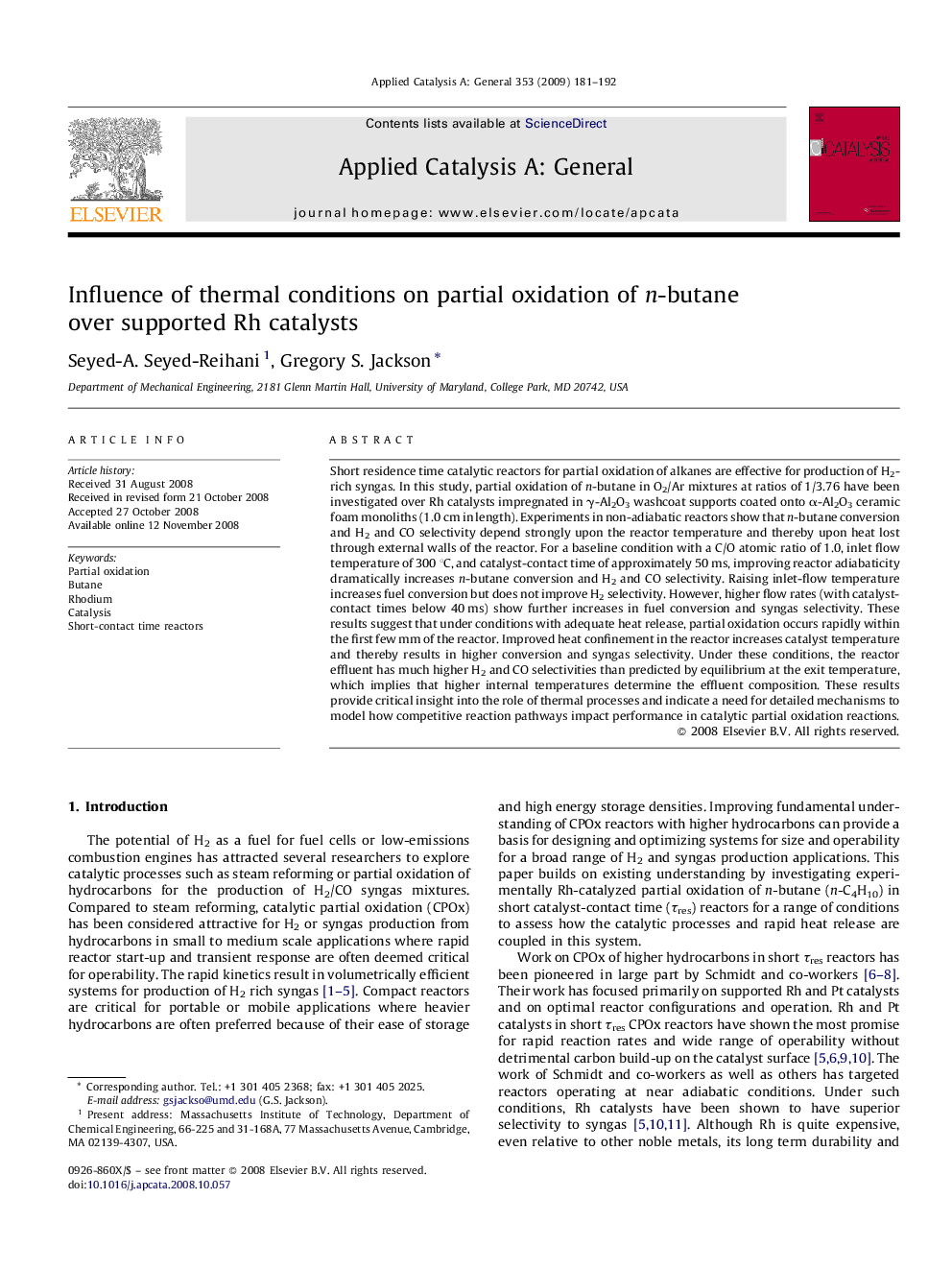| کد مقاله | کد نشریه | سال انتشار | مقاله انگلیسی | نسخه تمام متن |
|---|---|---|---|---|
| 42940 | 45948 | 2009 | 12 صفحه PDF | دانلود رایگان |

Short residence time catalytic reactors for partial oxidation of alkanes are effective for production of H2-rich syngas. In this study, partial oxidation of n-butane in O2/Ar mixtures at ratios of 1/3.76 have been investigated over Rh catalysts impregnated in γ-Al2O3 washcoat supports coated onto α-Al2O3 ceramic foam monoliths (1.0 cm in length). Experiments in non-adiabatic reactors show that n-butane conversion and H2 and CO selectivity depend strongly upon the reactor temperature and thereby upon heat lost through external walls of the reactor. For a baseline condition with a C/O atomic ratio of 1.0, inlet flow temperature of 300 °C, and catalyst-contact time of approximately 50 ms, improving reactor adiabaticity dramatically increases n-butane conversion and H2 and CO selectivity. Raising inlet-flow temperature increases fuel conversion but does not improve H2 selectivity. However, higher flow rates (with catalyst-contact times below 40 ms) show further increases in fuel conversion and syngas selectivity. These results suggest that under conditions with adequate heat release, partial oxidation occurs rapidly within the first few mm of the reactor. Improved heat confinement in the reactor increases catalyst temperature and thereby results in higher conversion and syngas selectivity. Under these conditions, the reactor effluent has much higher H2 and CO selectivities than predicted by equilibrium at the exit temperature, which implies that higher internal temperatures determine the effluent composition. These results provide critical insight into the role of thermal processes and indicate a need for detailed mechanisms to model how competitive reaction pathways impact performance in catalytic partial oxidation reactions.
α-Al2O3-foam monoliths (1.0 cm long) with γ-Al2O3 washcoat impregnated with Rh catalyst have been tested for catalytic partial oxidation of n-butane. At a C/O ratio of 1.0 and inlet flow temperature of 300 °C, improving reactor adiabaticity increases fuel conversion and H2 and CO selectivity. Increasing reactor flow rates also increases fuel conversion and syngas selectivity due to better heat confinement and higher reactor temperatures.Figure optionsDownload as PowerPoint slide
Journal: Applied Catalysis A: General - Volume 353, Issue 2, 1 February 2009, Pages 181–192